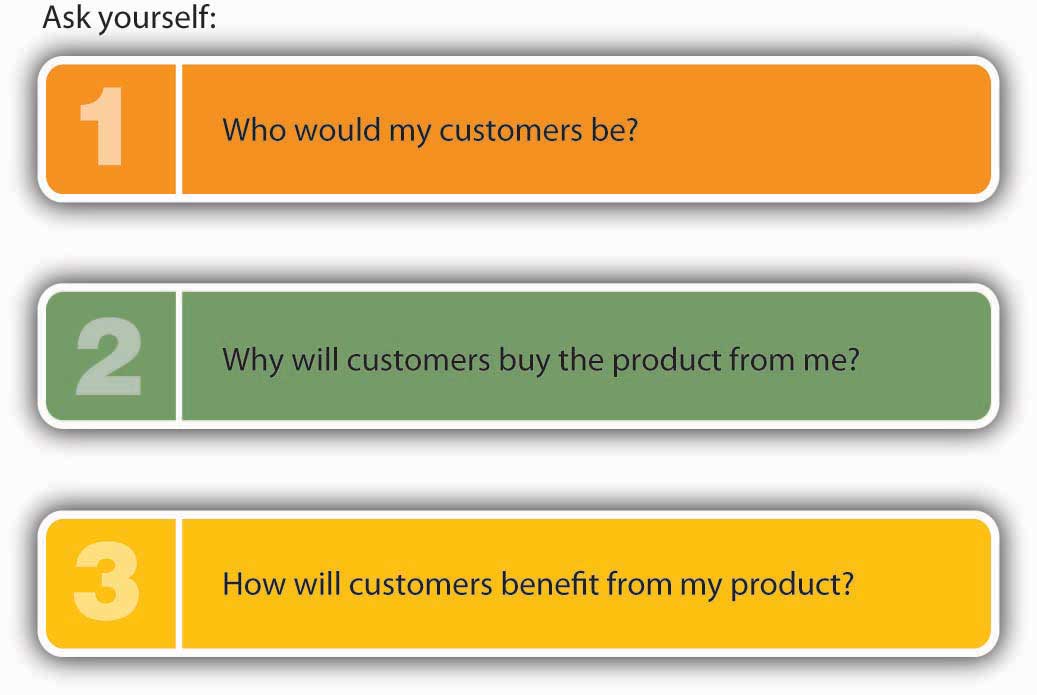10.3 Identifying Business Opportunities
Learning Objectives
- Explain how an idea turns into a business opportunity.
- Describe the four types of utility provided by a product: time, place, ownership, and form.
An idea turns into a business opportunity when it has commercial potential—when you can make money by selling the product. But needless to say, not all ideas generate business opportunities. Consider these products that made the list of the “Top 25 Biggest Product Flops of All Time”:
-
Bic underwear. When you think of Bic you think of inexpensive pens and disposable razors and lighters. But disposable underwear? Women didn’t find the idea of buying intimate attire from a pen manufacturer appealing, and the disposability factor was just plain weird.
-
Harley Davidson perfume. Even its loyal fans found the idea of Harley-Davidson perfume peculiar (and they weren’t terribly fond of the Harley-Davidson aftershave, either). Perhaps they were afraid they would end up smelling like a motorcycle.
-
Bottled water for pets. OK, so people love their pets and cater to them, but does it really make sense to serve Thirsty Cat! and Thirsty Dog! bottled water to your four-legged friends? Even though the water came in tantalizing flavors such as Crispy Beef and Tangy Fish, it never caught on. Do you wonder why?
-
Colgate kitchen entrees. Colgate’s entrance into food products wasn’t well received. Maybe the company believed customers would buy into the idea of eating one of its prepared meals and then brushing their teeth with Colgate toothpaste. For most of us, the name Colgate doesn’t get our taste buds tingling.
Utility
Remember: being in business is not about you—it’s about the customer. Successful businesspeople don’t ask themselves “What do I want to sell?” but rather “What does the customer want to buy?” Customers buy products to fill unmet needs and because they expect to derive some value or utility from them. People don’t buy Alka-Seltzer because they like the taste or even because the price is right: they buy it because it makes their indigestion go away. They don’t shop at Amazon.com because the Web site is entertaining: they shop there because they want their purchases delivered quickly. The realization that this kind of service would meet customer needs made Amazon.com a genuine business opportunity.
Products provide customers with four types of utility or benefit:
-
Time utility. The value to a consumer of having a good or a service available at a convenient time. A concessionaire selling bottled water at a summer concert is making liquid refreshment available when it’s needed.
-
Place utility. The value to a consumer of having a product available in a convenient location. A street vendor selling hotdogs outside an office building is making fast food available where it’s needed.
-
Ownership utility. Value created by transferring a product’s ownership. A real estate agent helping a young couple buy a home is transferring ownership from someone who doesn’t need it to someone who does.
-
Form utility. The value to consumers from changing the composition of a product. A company that makes apparel is turning raw material (fabric) into a form (clothing) that people need. A company that produces liquid detergent, rather than powdered detergent, is adding form utility for some consumers.
How can you decide whether an idea provides utility and has the potential to become a business opportunity? You should start by asking yourself the questions in Figure 10.4 "When Is an Idea a Business Opportunity?": if you can’t come up with good answers to these questions, you probably don’t have a highly promising product. On the other hand, if you conclude that you have a potential product for which people would pay money, you’re ready to take the next step: analyze the market to see whether you should go forward with the development of the product.
Key Takeaways
- An idea turns into a business opportunity when it has commercial potential—when you can make money by selling the product.
- Time utility provides value by having a product available at a convenient time.
- Place utility provides value by having a product available in a convenient location.
- Ownership utility provides value by transferring a product’s ownership.
- Form utility provides value by changing the composition of a product.
Exercise
(AACSB) Analysis
Provide two examples of each of the four types of utility: time, place, ownership, and form. Don’t use the examples given in the book.
